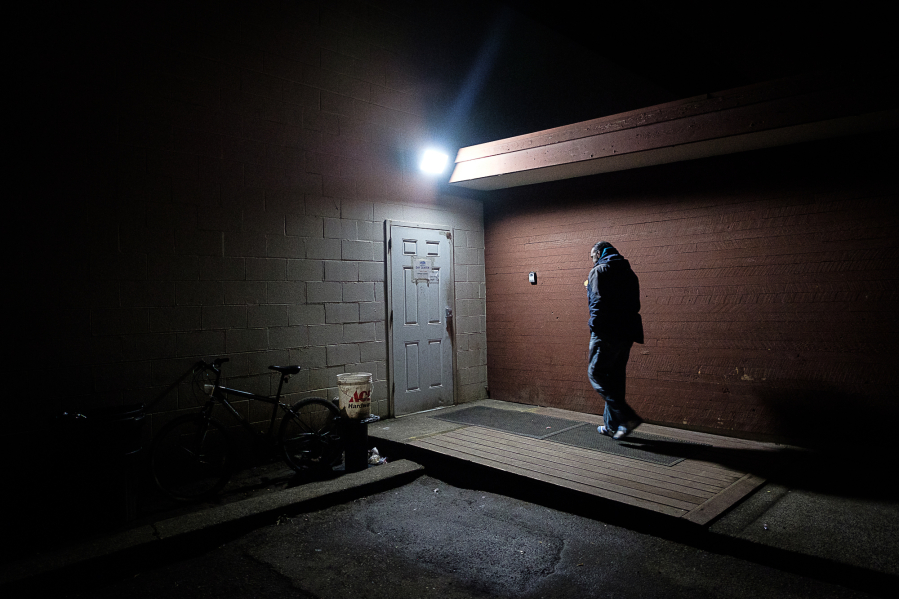Sleeping outside sucks, said Brian Moore.
The 35-year-old has been homeless off and on for three years, but this stint “has been a lot better.” That’s because some nights this winter, he’s slept on the cafeteria floor at Share House, the men’s homeless shelter in downtown Vancouver. Other nights, he’s at the day center at Friends of the Carpenter. He got snowed in at the warehouse in west Vancouver when about a foot of snow fell last month. It was the biggest snowfall since 2008 and among the top 10 snowstorms of the past century, with a deluge of ice, wind and rain that followed.
“Honestly, it was probably the best week ever of being homeless,” Moore said. “What they do for homeless people is pretty awesome.”
The tables in the 1,200-square-foot day center, which is a resource center during the day, are rearranged at night to make room for pads and sleeping bags on the concrete floor. Moore uses headphones to block out noise and fall asleep surrounded by at least a dozen other people.
While it may not sound ideal, such a facility to get out of the elements wasn’t available last winter. The day center and other buildings opened these last couple of months in response to severe weather that caught people off guard and forced the community to scramble to open severe weather shelters for homeless people.




